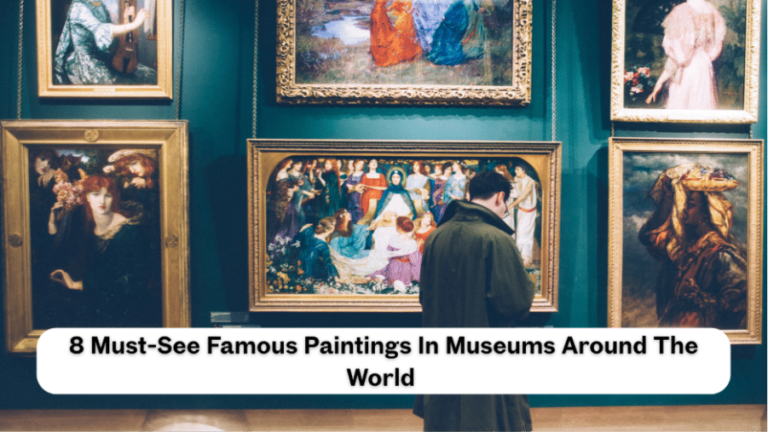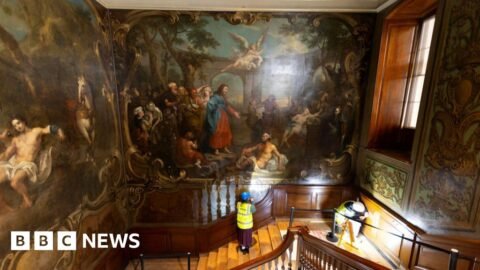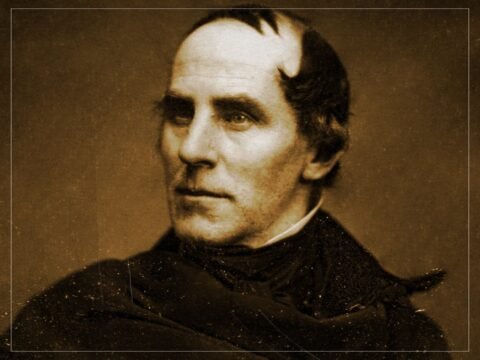

Art possesses the special ability to captivate human emotion, imagination, and cultural history in a manner that is impossible to convey through words. Throughout the centuries, some art pieces have become renowned worldwide, remaining the most prominent paintings that continue to captivate viewers even today.
Not only do each masterpiece narrate the story of the artistry and creativity of the artist, but it also narrates the story of the time, society and ideas that influenced it. These paintings provide valuable information about the changing relationship of human beings with art and beauty, from the Renaissance portraits to the modernist expressions.
Visiting museums where these iconic works are on display gives one the chance to experience their size, detail, and emotional power in a truly tangible sense, establishing a bridge between time and space.
The study of this type of work adds value to the investigation of artistic innovation and cultural heritage. The eight paintings discussed below are some of the most renowned accomplishments in the art world, and they evoke awe, reflection and admiration in equal measure.
1. Mona Lisa by Leonardo da Vinci
Housed in the Louvre Museum in Paris, Leonardo da Vinci’s Mona Lisa is often regarded as one of the most famous paintings in the world.
This portrait of Lisa Gherardini was painted around 1503-1506, and it has been praised due to her mysterious look and the minimal presence of sfumato, a technique that gives a smooth and gradual shift between colors and tones.
The mysterious background of the painting, combined with the elusive smile on the face of the subject, makes the painting even more fascinating to art enthusiasts and scholars across centuries.
2. The Starry Night by Vincent van Gogh


Displayed at the Museum of Modern Art (MoMA) in New York City, The Starry Night captures a turbulent night sky hovering over a peaceful village.
It was painted in 1889, during the period when van Gogh was in one of the mental hospitals in Saint-Remy-de-Provence and his mood, as well as his creativity with color and brushwork, are depicted.
The dynamic sky with glittering stars and glowing moon is in contrast to the calmness of the sleeping town below, which gives the impression of movement and depth.
3. The Persistence of Memory by Salvador Dalí
In MoMA, The Persistence of Memory by Salvador Dali does not conform to the concept of time and reality.
This surrealist masterpiece was painted in the year 1931, and it consists of melting clocks hung over barren landscapes to represent fluidity and relativity of time.
The carefulness of the technique and imagination of Dali invite the audience to think about what the nature of existence is and the limits of the conscious and unconscious mind.
4. The Scream by Edvard Munch


One of the most vivid statements of existential anguish was painted in 1893 by Edvard Munch in The Scream, which is hosted by the National Gallery in Oslo.
The work was created in 1893, and it portrays the figure standing on a bridge with its horrified face clutched to a furious sky.
The bright palette and unnatural shapes create the impression of fear and desperation, which can be close to every human being in the state of inner confusion.
5. The Night Watch by Rembrandt van Rijn
Rembrandt’s monumental 1642 group portrait, The Night Watch, is displayed at the Rijksmuseum in Amsterdam.
As opposed to the title, the painting shows a vibrant militia company gearing up to go on a task, with intense lighting on the expressions and motions of the figures.
The innovative light and composition introduced by Rembrandt made the traditional genre of group portraits dynamic in terms of realism.
6. Girl with a Pearl Earring by Johannes Vermeer


Girl with a Pearl Earring by Johannes Vermeer is located in the Mauritshuis in The Hague, Netherlands.
This interesting portrait was painted circa 1665, and it is a portrait of a young girl with a massive pearl earring, looking over her shoulder.
Such a skillful employment of light and shadows, as well as the direct yet inexplicable look of the subject, has earned the painting the title of the Dutch Mona Lisa.
7. The Kiss by Gustav Klimt
One of the most vivid examples of the opulence and intimacy of the Art Nouveau is Gustav Klimt’s The Kiss of Vienna, located in the Österreichische Galerie Belvedere. This Art Nouveau masterpiece was painted in 1907-1908 and depicts a couple embracing each other, wearing golden robes.
The elaborate designs and application of gold leaf make the work by Klimt look luxurious and intimate, which makes the painting an icon of love and passion.
8. The Birth of Venus by Sandro Botticelli
Displayed in the Uffizi Gallery, Florence, Italy, is The Birth of Venus by Sandro Botticelli. Painted around mid-1480s, this Renaissance artwork is the mythical birth of Venus, the goddess of love, who comes out of the sea and sits on a shell.
The elegant way of Botticelli in the description of the human body and the heavenly nature of the scene are evidence of the interest of the epoch in classical mythology and humanism.
Bottom Line
These eight paintings are the masterpieces of the artistic production in various epochs and styles. All pieces provide a distinct insight into the world of the artist and the culture of the era.
Taking a tour of these masterpieces in individual museums is an enriching experience, as it gives a person a chance to enjoy the richness and variety of human creativity.
Whether it is the calm and gentle smile of the Mona Lisa or the unrealistic sceneries of The Persistence of Memory, they remain inspirational and thought-provoking, and that is the unchanging strength of art.





